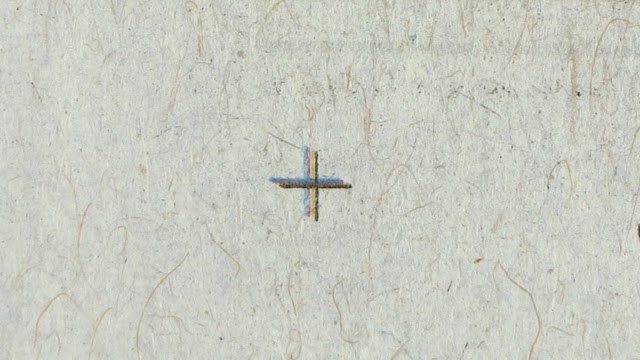New Technology, New Listening, New Angel
Taehyun Kwon
Maybe, someone might have been able to create subtitles for the interview by thoroughly analyzing the meaning of the speaker's words. However, Minsu Oh never added subtitles to them even when he presented such pieces multiple times. The problem of such overlapping boundaries between words and sounds itself is an important element of his convention. New Technology consists of the sound of such words, the image and sound of the rotary press that prints out the newspaper, and sometimes the mechanical installation outside the screen. Machines and a human are taking turns making sounds, and it sounds like a sort of dialogue in a way. Of course, it is not understandable.
New Technology: Run Start Common Neutral Ground, full ver. 2022,
Refrigerator, washing machine, vacuum, Bible, arduino, mixed media, dimensions variable,
18min interworking with video and machine (Run Start Common Neutral Ground),
Supported by the team 'Crip, Cribton', 2022
Amid the interchanging images and sounds of machines and humans, the video captures a wide range of areas in the factory where newspapers are printed from diverse viewpoints. Here, new technologies and the novelty of newspapers work paradoxically in many ways. Above all, newspapers are the least newest technology. You can rarely see people grabbing newspapers for breaking stories nowadays. People look at the world in real-time through the phone in their hands. As we ride the timelines of social media that pour data faster than the rapidly running rotary press, novelty to us is very different from how it was in the era of newspapers. The oldest media paradox in the name of new. If you look at the word Shinmun (新聞), which means newspaper in Korean, it can be translated literally into“hear new things,”as “shin” means new and “mun” means hear. What if we read the newspaper as if we were listening to\ new things? The challenge is to listen to New Technology that twists the sound of humans (words), machine noises, and sound works as something new. Then again, it overlaps all over again.
Sound is not the only abstract thing in New Technology. The video also shows scenes in which the camera is shaken by a hand or are extremely close-up. When capturing a printed newspaper, it fills the screen with extreme details to the point where you can see the texture of thin paper or the layers of printed CMYK dots. In addition, a huge rotary press operation continues to appear on the screen, and you will see an abstract screen that runs in one direction even when the rotary press is rapidly running and the printed newspapers are filling up the screen. Paul Virilio said that speed changes the shape of the world. What he means is that speed affects objects' likelihood of appearing or their forms. His argument that the acceleration of the world influenced the abstract paintings of contemporary art is interesting. We think of abstractions as creations of overlapping things that are too fast, too close, or too different.
New Technology, video ver. 2022, single channel video, 16min 17sec,
Commissioned by 2022 Seo-Seoul Museum of Art
Pre-opening Public Program Exceptional Times, Uncertain Moves,
2022
In addition, the installation work, which functions with the video of New Technology, the Bible spread out in single pages is illuminated with lights. The version screened at the Seo-Seoul Museum of Art's pre-opening program Exceptional Times, Uncertain Moves, the images of Bible pages illuminated with lights were inserted in the video. When you shine light on a thin piece of Bible paper, printed letters on the back of the clearly readable printed text suddenly pop forward and overlap. Thus, the Bible becomes the unreadable text, the tangled letters of the apostles, and the overlapping and murmuring voice of God.
In fact, texts are always written overlapped in such a manner. When we read a palimpsest over again, a reused parchment, we can always find a new constellation regardless of the linear time. The overlaps in the back of the text on the surface destroy both the texts on the front and the back, allowing them to be read new every time. Paul Klee's Angelus Novus, which Walter Benjamin introduces in his Theses on the Philosophy of History as he talks about the dialectical history that defies the progressing temporality, was created using a technique called the oil transfer method. When you apply oil paint on a sheet of paper placed on the floor and lay another sheet of paper on top of it and draw a picture on it, the oil is transferred to the back of the paper. Something overlaps once again in the transfer that goes back and forth on the paper. Paul Klee used this technique to portray an angel defying the progressing time with his back turned and looking back with his wings spread. It reminds us of something that the angel saves as he looks outside the picture plane and the power that stops the progressing world for a while as he spreads his wings.
49 LCD monitor, motor, arduino, 20min interworking with video and machine,
Supported by the Seoul Art Space Geumcheon, 2022
Taehyun Kwon (art critic)
He writes and plans various projects. Even though he works in the art world, he is always interested more in things that are not easily considered art. He explores how things outside art can be considered as objects inside art. He continues his research with weight on the perspective of grasping political matters as issues of aesthetic.
He writes and plans various projects. Even though he works in the art world, he is always interested more in things that are not easily considered art. He explores how things outside art can be considered as objects inside art. He continues his research with weight on the perspective of grasping political matters as issues of aesthetic.





